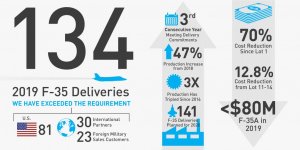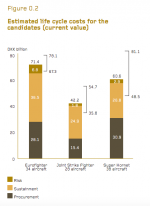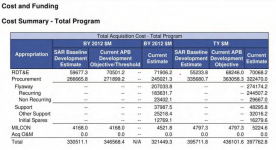All that talk of hangar space...
*shakes head*

 skiesmag.com
Mission systems and aircraft performance will be paramount in any Air Force evaluation, but the ease of transition from the CF-188 to the Super Hornet may also earn Boeing points. In interviews with Skies at the U.S. Navy’s Fleet Replacement Squadron and at the Center for Naval Aviation Technical Training Unit, both in Norfolk, Va., pilots and maintenance technicians described conversion programs from the F/A-18C to the E of about three months for pilots and four to six months for techs, depending on the systems.
skiesmag.com
Mission systems and aircraft performance will be paramount in any Air Force evaluation, but the ease of transition from the CF-188 to the Super Hornet may also earn Boeing points. In interviews with Skies at the U.S. Navy’s Fleet Replacement Squadron and at the Center for Naval Aviation Technical Training Unit, both in Norfolk, Va., pilots and maintenance technicians described conversion programs from the F/A-18C to the E of about three months for pilots and four to six months for techs, depending on the systems.
“A lot of that training transfers one for one,” observed Traven, noting the similarity of most systems in the cockpit and throughout the aircraft.
Just as important, all the ground support equipment (GSE) and tooling is the same, meaning equipment at operating squadrons and forward bases would not need to be replaced. Both Traven and Barnes observed that while there was mention of infrastructure in the RFP, there was no discussion of the support systems and even runway lengths that might have to change with other aircraft. “I think that has been lost in this whole discussion,” said Traven.
“It is a big deal and I hope they are considering that in an appropriate manner,” added Barnes. “When you are already operating legacy Hornets, the requirement to get current maintainers and pilots up to speed on a Super Hornet is much less than it would be starting from scratch.”
*shakes head*

Low-risk capability: Boeing says Block III Super Hornet offers Canada proven performance and predictable costing - Skies Mag
Boeing also said the program offers a binding commitment for significant investment in Canadian content and a ‘gradual handover’ of intellectual property.
“A lot of that training transfers one for one,” observed Traven, noting the similarity of most systems in the cockpit and throughout the aircraft.
Just as important, all the ground support equipment (GSE) and tooling is the same, meaning equipment at operating squadrons and forward bases would not need to be replaced. Both Traven and Barnes observed that while there was mention of infrastructure in the RFP, there was no discussion of the support systems and even runway lengths that might have to change with other aircraft. “I think that has been lost in this whole discussion,” said Traven.
“It is a big deal and I hope they are considering that in an appropriate manner,” added Barnes. “When you are already operating legacy Hornets, the requirement to get current maintainers and pilots up to speed on a Super Hornet is much less than it would be starting from scratch.”













 Rafales are not super hornets, Canada is not India. A
Rafales are not super hornets, Canada is not India. A  child's guide
child's guide to explaining the obvious, and why using proper models matter
to explaining the obvious, and why using proper models matter
